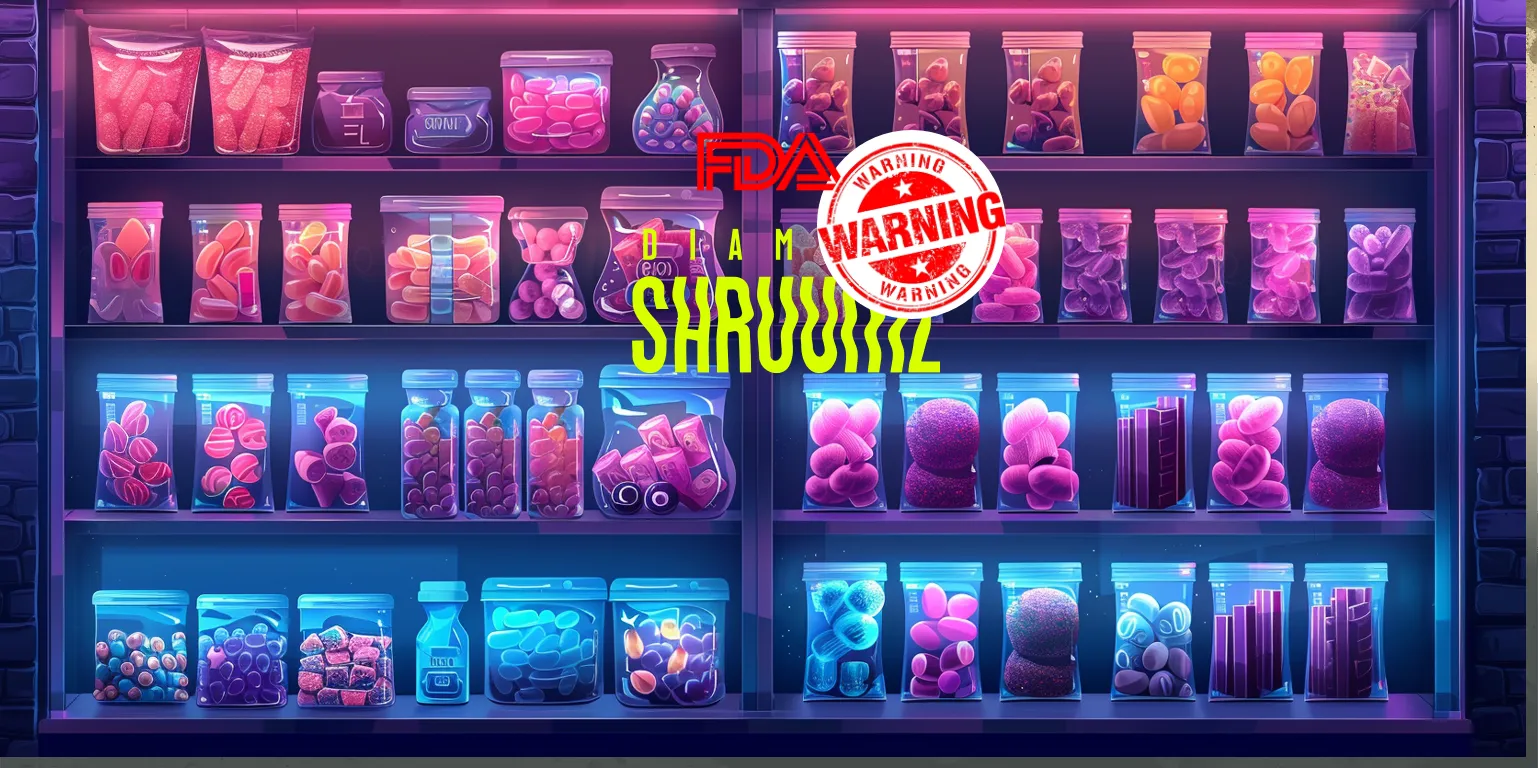As researchers learn more about the realities of attention-deficit/hyperactivity disorder (ADHD), it’s becoming increasingly clear that traditional treatments are struggling to keep pace with patients’ needs. Many standard methods fall short or are ineffective, leaving patients desperate for better solutions. Meanwhile, those reliant on these treatments find themselves grappling with side effects or the repercussions of an ongoing Adderall shortage, further complicating already challenging situations. It may come as no surprise then that people have turned their eyes to an unconventional new treatment: microdosing for ADHD. (1)
“ADHD is highly prevalent among children, affecting around 9.8% or approximately 6 million children in the US.”
While the concept of microdosing is not new, with Silicon Valley executives and other notable public figures using psychedelics for productivity, it has come further into the mainstream. However, the practice has only recently been introduced to clinical research. Given that psychedelics have shown significant improvements for individuals struggling with mental illnesses such as anxiety and depression, it seems a worthwhile question to ask: can it help with ADHD, too? (2)
We spoke with Eline Haijen, a Ph.D. candidate at Maastricht University, who conducted pioneering clinical trials on microdosing and ADHD.
“Naturalistic studies (research conducted in a natural setting) showed us that people with ADHD were microdosing to self-medicate and that it was more effective than conventional treatments they had tried,” Haijen tells us. “Other lab-based studies found improvements in attention performance after low doses and changes in time perception, aspects that are dysfunctional in people with ADHD, so we decided to investigate this further.”
Keep Up with Uncensored Psychedelic Trends
Join our newsletter at Psychedelics Uncensored.
We respect and protect your privacy. By subscribing your info will be subject to our privacy policy . Unsubscribe easily at any time
How Common is ADHD?

Attention deficit hyperactivity disorder (ADHD) is a neurological disorder characterized by disorganization, hyperactivity, and the inability to sustain attention. One of the earliest descriptions of ADHD comes from pediatrician George Still in the early 1900s, who categorized a subset of children as suffering from a “defect in moral control.” Thanks to a better understanding of ADHD, we no longer label kids as morally defective for lack of attention but know that these issues can arise from irregular neurological activity. (3, 4)
ADHD is highly prevalent among children, affecting around 9.8% or approximately 6 million children in the U.S., as reported by the CDC in 2019. While symptoms may subside with age, up to 90% of children may have persisting ADHD symptoms into adulthood.(5, 6)
Notably, there has been a significant uptick in adult ADHD diagnoses, with a staggering 123% increase reported in the U.S. from 2007 to 2016. However, it remains uncertain whether this surge reflects improved recognition or overdiagnosis of ADHD. (5, 7)
Traditional ADHD Treatments
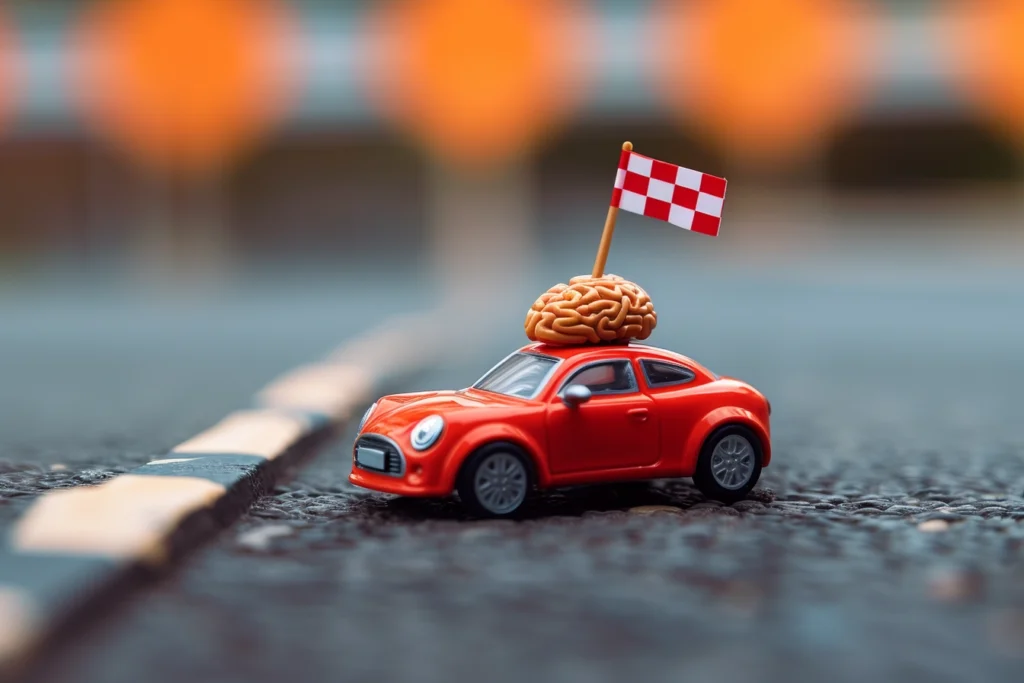
One of the major targets for ADHD treatment is the neurotransmitter dopamine, which is essential for motivation and reward. It’s why we feel good when we get a job done, and it helps us want to do the job in the first place. But for individuals with ADHD, staying motivated can be challenging, and when they’re in the middle of a task, it can be difficult to stay on track.(10, 11)
For ADHD, a Goldilocks metaphor can be applied: if dopamine levels are too low, individuals can have trouble with attention and motivation; when dopamine levels are too high, cognitive performance can decline, and individuals can experience excessive arousal and hyperactivity. There’s a sweet spot of dopaminergic activity in the brain, and stimulant medications like methylphenidate aim to push dopamine levels in that direction.(10, 12)
Keep Up with Psychedelic Trends
Get uncensored psychedelic news, events, and updates. Join Psychedelics Uncensored!
We respect and protect your privacy. By subscribing your info will be subject to our privacy policy . Unsubscribe easily at any time
ADHD medications are often effective in managing symptoms, but they may have side effects or lose their efficacy over time. For a select few, these medications do not work at all, as one study found that an estimated 20 to 35% of their participants had an inadequate response to initial stimulant treatment.(13)
Iva Totomanova is a cognitive and clinical neuroscience researcher studying in the Netherlands who specializes in ADHD and microdosing psychedelics. In our interview with her, Totomanova mentions, “I’ve had a lot of people reach out to me regarding their ADHD, parents even, who are desperate to fill this need because current medications are not doing the trick.”
“Microdosing LSD has a fascinating effect on how participants perceive time and often leads to the feeling that time is passing more slowly as if time itself is being stretched out.”
What is Microdosing?
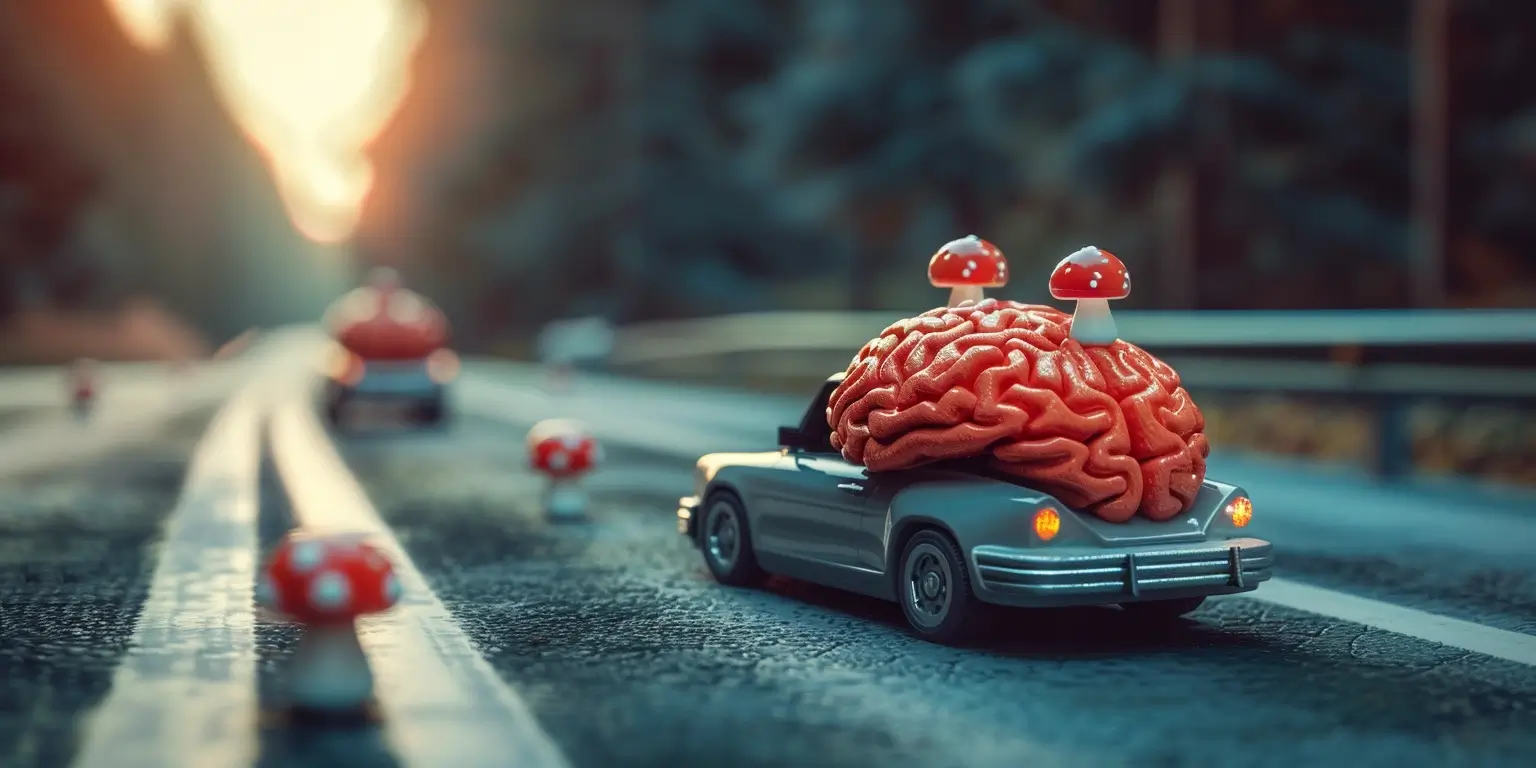
Microdosing is the practice of taking small doses of psychedelics such as lysergic acid diethylamide (LSD) and psilocybin (aka magic mushrooms). The doses consumed for microdosing are typically sub-perceptual (no obvious psychedelic effects), ranging from 1/10th to 1/20th of a dose, and are substantially below the threshold of a psychedelic “trip.” Ultimately, these dosages tend to be tailored by the individual, with some preferring a slightly perceptual dose.(2, 14, 15, 16)
Research on Psychedelic Microdosing for ADHD
Microdosing research is currently split into two groups: with naturalistic studies focused mostly on psilocybin, and more formal research examining LSD. One line of thinking is that LSD will be more effective for ADHD symptoms than psilocybin, as LSD has more dopaminergic activity. But recent research tells us a different story.(17)
In naturalistic studies where individuals self-administered psilocybin, participants found that their focus, attention, and concentration improved. Participants felt they were more engaged and better able to stay on task. Subjects also experienced increased mindfulness and decreased neuroticism after four weeks of microdosing. These results are promising for future research and set a precedent for controlled studies.(17, 18, 19)
“One clear advantage of microdosing is that it isn’t typically done every day while conventional medication is administered at least daily or several times a day.”
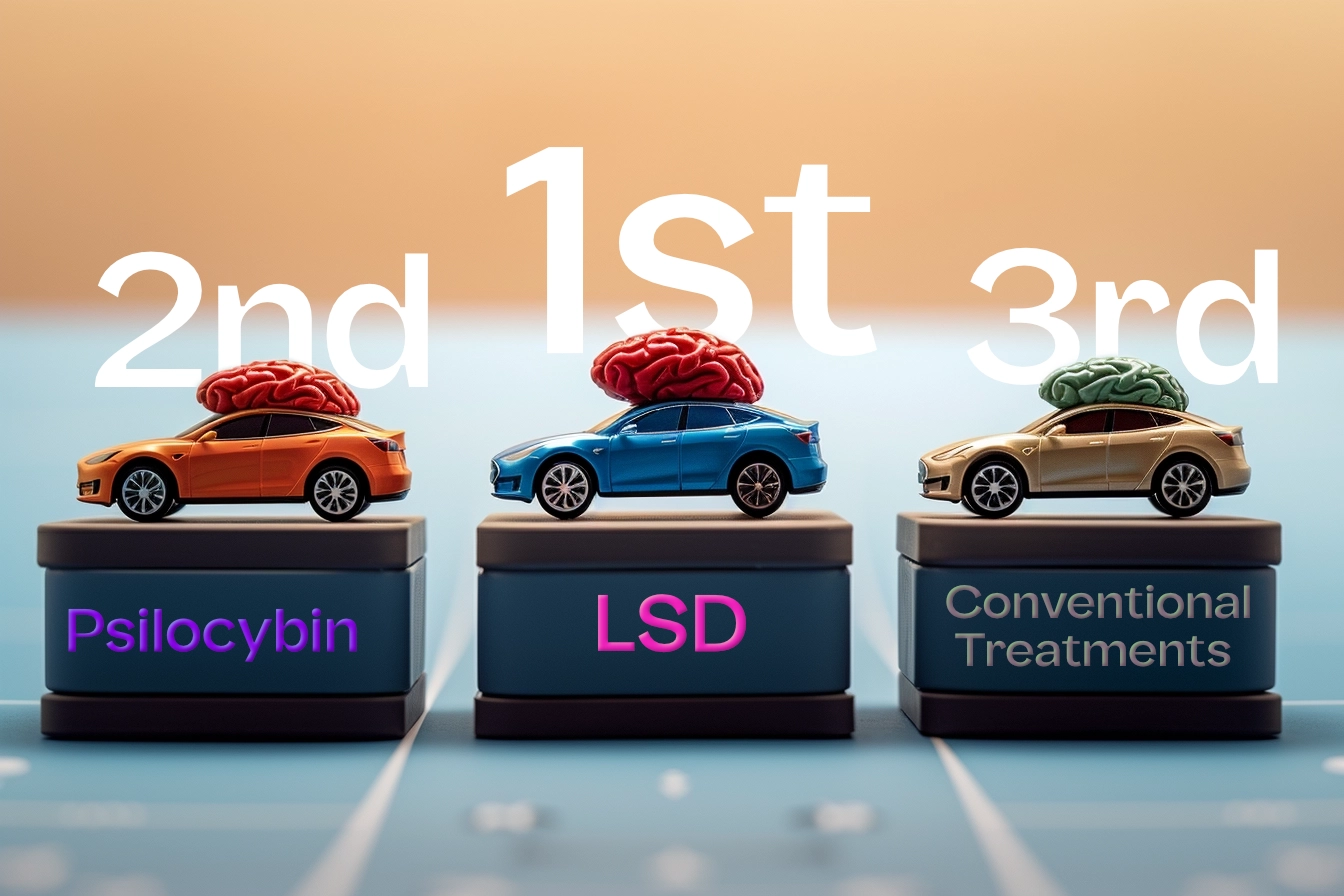
Given that psilocybin microdosing shows promise for ADHD, the expectation is that LSD would do just as well, if not better, due to its dopaminergic activity. However, the results have been mixed in studies in which participants have microdosed with LSD in controlled settings.
In LSD microdosing research, dosages have ranged from 5 to 26 μg (micrograms), and results seem to largely depend on the strength of the dose. In two of the first placebo-controlled studies, participants would see improvements in productivity and minor cognitive improvements for a medium microdose (10 μg). Participants at the higher dose (20 μg and 26 μg) saw positive changes in mood and attention, including increased feelings of vigor, but could not complete more complex cognitive tasks. This may have been due to dosage, as a dose of 20 μg teeters on the threshold of what would be considered a microdose and can start to have perceptual effects.(20, 21)
In that case, medium doses, rather than higher ones, may be ideal for focusing on complex tasks. However, one of the most exciting findings for microdosing is not its ability to enhance focus but rather its effects on how we perceive time.
People with ADHD have a faster “internal clock.” This is a key symptom of ADHD, as studies have found that children with ADHD tend to overestimate the time it takes to complete a task considerably. Targeting time perception deficits in ADHD may help with clinical applications in assessing and managing the disorder.(20–24)
Microdosing LSD has a fascinating effect on how participants perceive time and often leads to the feeling that time is passing more slowly as if time itself is being stretched out. This effect could be a game-changer for individuals with ADHD, offering a chance to sync up their internal clock with the world around them.(20, 21, 25)
What’s more, this phenomenon isn’t just a fluke; it’s been replicated several times. The consistency of these findings shows us that these effects are significant and adds an exciting layer of intrigue to the exploration of microdosing’s potential benefits.(20, 21, 25)
Microdosing vs Conventional ADHD Treatments
While the effects of microdosing are indeed promising, we should not see them as an outright replacement for conventional medication.
As Haijen elaborates, “One clear advantage of microdosing is that it isn’t typically done every day while conventional medication is administered at least daily or several times a day. But I would not say they can replace the medications entirely, and that’s not the goal, because they do work for some people.”

An upcoming paper by Haijen looks at ADHD symptoms for conventional medication users and microdosing, comparing them across time. “We’ve seen that medication users show stable improvement of symptoms at different time points. However, microdosing users show fewer improvements initially, but over time, improvements increase to show less symptom severity than the medication group.”
This makes sense in terms of ADHD medications work vs. how psychedelics work. Medication for ADHD tends to be fast-acting. Stimulants can start working within 30 minutes to an hour after taking them. The effect of psychedelic microdosing, on the other hand, is supposedly cumulative, taking effect after repeated use over time. However, after several weeks, microdosing can be subject to tolerance, which is why microdosing protocols such as the Fadiman protocol — a schedule of taking one dose followed by two days off — call for a cycle of rest for at least two to four weeks after four to eight weeks of dosing.(2, 9)
Research in microdosing is so nascent that it’s difficult to discern the benefits and downsides compared to conventional medication from the research alone. Some of the best insights into microdosing for ADHD come from anecdotal reports, as one study participant shares, “Adderall has this feeling of like forcing you to focus, whereas, with LSD, it’s more like you want to.”(26)
In another case study, a man who took methylphenidate (a common ADHD medication) for more than a decade felt that it was erasing his identity and turning him into a “zombie.” After a full dose of psilocybin and continual microdosing, he felt that he was cured of his ADHD and could take control of his brain for the first time.(19)
The Future of Microdosing and ADHD Research
The early stage of microdosing research leaves us with more questions than answers. But the prospects are exciting, as the research seems to be shedding light not just on microdosing but also on how the mind works as a whole.
Haijen mentions, “It would be very interesting to have a study comparing psilocybin to LSD to see if people who use psilocybin improve just as much compared to LSD, then the dopaminergic activity wouldn’t really be the mechanism
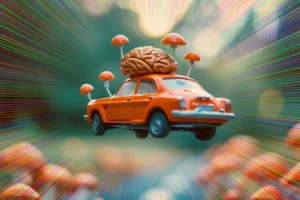
behind the therapeutic effects. This would show that serotonin also plays an important role in attention and mood, which is highly comorbid (a medical condition occurring at the same time as another disease or condition).”
Classic psychedelics, while proposed to have indirect effects on dopamine, are primarily known to affect serotonergic activity. Serotonin is a neurotransmitter that can help with the regulation of mood. While serotonin can regulate cognitive functions such as learning, memory, and attention, as of now, serotonin is not heavily associated with ADHD.(27)
Psychedelics have already made a great contribution to what we know about serotonin today. If psychedelics are an effective treatment of ADHD, this would be big news in terms of the relationship between serotonin and attention.
As of now, however, there are a lot of limitations in the research. The measures currently employed in microdosing research are largely derived from our understanding of full doses of psychedelics and the metrics used in conventional medication studies.
Haijen emphasizes, “I think the research should be more nuanced. We want to see the full picture of the limitations and advantages of microdosing, so it’s important to find ways to capture those effects. We should consider different paths of looking at acute and subacute effects.”
Editor’s Note: MindMed, a biopharmaceutical firm developing psychedelic medicines for a variety of conditions, has been running a clinical trial assessing the use of LSD for ADHD. The Phase lla trial used low-dose (20 μg) LSD compared with a placebo, taken twice weekly for 6 weeks in adults with ADHD. The trial was successfully moved to Phase ll, and this past January, the company released its latest results. The study did not meet its primary endpoint (a mean change of ADHD symptoms), and MindMed has decided to discontinue this ADHD program. While this may seem like a setback for those hoping for more clinical support of microdosing’s potential, studies run by commercial firms must consider finances and other factors when making decisions on continuing or fine-tuning expensive clinical trials.(28)
Sources

1. Scott, D. The ongoing, unnecessary Adderall shortage, explained. Vox https://www.vox.com/policy/2023/4/10/23671128/adhd-medication-adderall-shortage-2023 (2023)
2. Fadiman, J. The Psychedelic Explorer’s Guide: Safe, Therapeutic, and Sacred Journeys. (Simon and Schuster, 2011)
3. Gunnerson, T. A Brief History of ADHD. WebMD https://www.webmd.com/add-adhd/adhd-history.
4. American Psychiatric Association. Diagnostic and Statistical Manual of Mental Disorders (DSM-5®). (American Psychiatric Publishing, 2013).
5. Abdelnour, E., Jansen, M. O. & Gold, J. A. ADHD Diagnostic Trends: Increased Recognition or Overdiagnosis? Mo. Med. 119, 467–473 (2022).
6. Sibley, M. H. et al. Variable Patterns of Remission from ADHD in the Multimodal Treatment Study of ADHD. Am. J. Psychiatry 179, 142–151 (2022).
7. Chung, W. et al. Trends in the Prevalence and Incidence of Attention-Deficit/Hyperactivity Disorder Among Adults and Children of Different Racial and Ethnic Groups. JAMA Netw. Open 2, e1914344 (2019).
8. Arnsten, A. F. T. Stimulants: Therapeutic Actions in ADHD. Neuropsychopharmacology 31, 2376–2383 (2006).
9. Wheeler, R. B. Short- and Long-Acting ADHD Meds: What’s the Difference? WebMD https://www.webmd.com/add-adhd/adhd-short-long-acting-meds.
10. Cristol, H. What Is Dopamine? WebMD https://www.webmd.com/mental-health/what-is-dopamine.
11. Spencer, R. C., Klein, R. M. & Berridge, C. W. Psychostimulants act within the prefrontal cortex to improve cognitive function. Biol. Psychiatry 72, 221–227 (2012).
12. Weber, M. A. et al. Quantifying the inverted U: A meta-analysis of prefrontal dopamine, D1-receptors, and working memory. Behav. Neurosci. 136, 207–218 (2022).
13. Childress, A. C. & Sallee, F. R. Attention-deficit/hyperactivity disorder with inadequate response to stimulants: approaches to management. CNS Drugs 28, 121–129 (2014).
14. Polito, V. & Liknaitzky, P. The emerging science of microdosing: A systematic review of research on low dose psychedelics (1955–2021) and recommendations for the field. Neurosci. Biobehav. Rev. 139, 104706 (2022).
15. Kuypers, K. P. et al. Microdosing psychedelics: More questions than answers? An overview and suggestions for future research. J. Psychopharmacol. (Oxf.) 33, 1039–1057 (2019).
16. Microdosing Protocols — Fadiman, Stamets, and more. Microdosing Institute https://microdosinginstitute.com/how-to/microdosing-protocols/.
17. Haijen, E., Hurks, P. & Kuypers, K. Microdosing with psychedelics to self-medicate for ADHD symptoms in adults: a prospective naturalistic study. Neurosci. Appl. 1, 100137 (2022).
18. Hutten, N. R. P. W., Mason, N. L., Dolder, P. C. & Kuypers, K. P. C. Motives and Side-Effects of Microdosing With Psychedelics Among Users. Int. J. Neuropsychopharmacol. 22, 426–434 (2019).
19. Totomanova, I. Psychedelics as a Potential Treatment Option in ADHD. (2020).
20. Bershad, A. K., Schepers, S. T., Bremmer, M. P., Lee, R. & de Wit, H. Acute Subjective and Behavioral Effects of Microdoses of Lysergic Acid Diethylamide in Healthy Human Volunteers. Biol. Psychiatry 86, 792–800 (2019).
21. Hutten, N. et al. Cognitive and subjective effects of different low ‘micro’ doses of LSD in a placebo-controlled study. Eur. Neuropsychopharmacol. 31, S63–S64 (2020).
22. Walg, M. & Prior, H. Prospective and Retrospective Verbal Time Estimation in Children with ADHD. Adv. Cogn. Psychol. 17, 212–220 (2021).
23. Sonuga-Barke, E. J., Saxton, T. & Hall, M. The role of interval underestimation in hyperactive children’s failure to suppress responses over time. Behav. Brain Res. 94, 45–50 (1998).
24. Sonuga-Barke, E., Bitsakou, P. & Thompson, M. Beyond the dual pathway model: evidence for the dissociation of timing, inhibitory, and delay-related impairments in attention-deficit/hyperactivity disorder. J. Am. Acad. Child Adolesc. Psychiatry 49, 345–355 (2010).
25. Yanakieva, S. et al. The effects of microdose LSD on time perception: a randomised, double-blind, placebo-controlled trial. Psychopharmacology (Berl.) 236, (2019).
26. Andersson, M. & Kjellgren, A. Twenty percent better with 20 micrograms? A qualitative study of psychedelic microdosing self-rapports and discussions on YouTube. Harm. Reduct. J. 16, 63 (2019).
27. Serotonin: What Is It, Function & Levels. Cleveland Clinic https://my.clevelandclinic.org/health/articles/22572-serotonin.
28. MindMed Announces Business Update and Anticipated Milestones for 2024. BusinessWire. https://www.businesswire.com/news/home/20240108449557/en/MindMed-Announces-Business-Update-and-Anticipated-Milestones-for-2024
This material is not intended as a replacement or substitute for any legal or medical advice. Always consult a medical professional about your health needs. Psychedelics are widely illegal in the United States, and readers should always be informed about local, state, and federal regulations regarding psychedelics or other drugs.
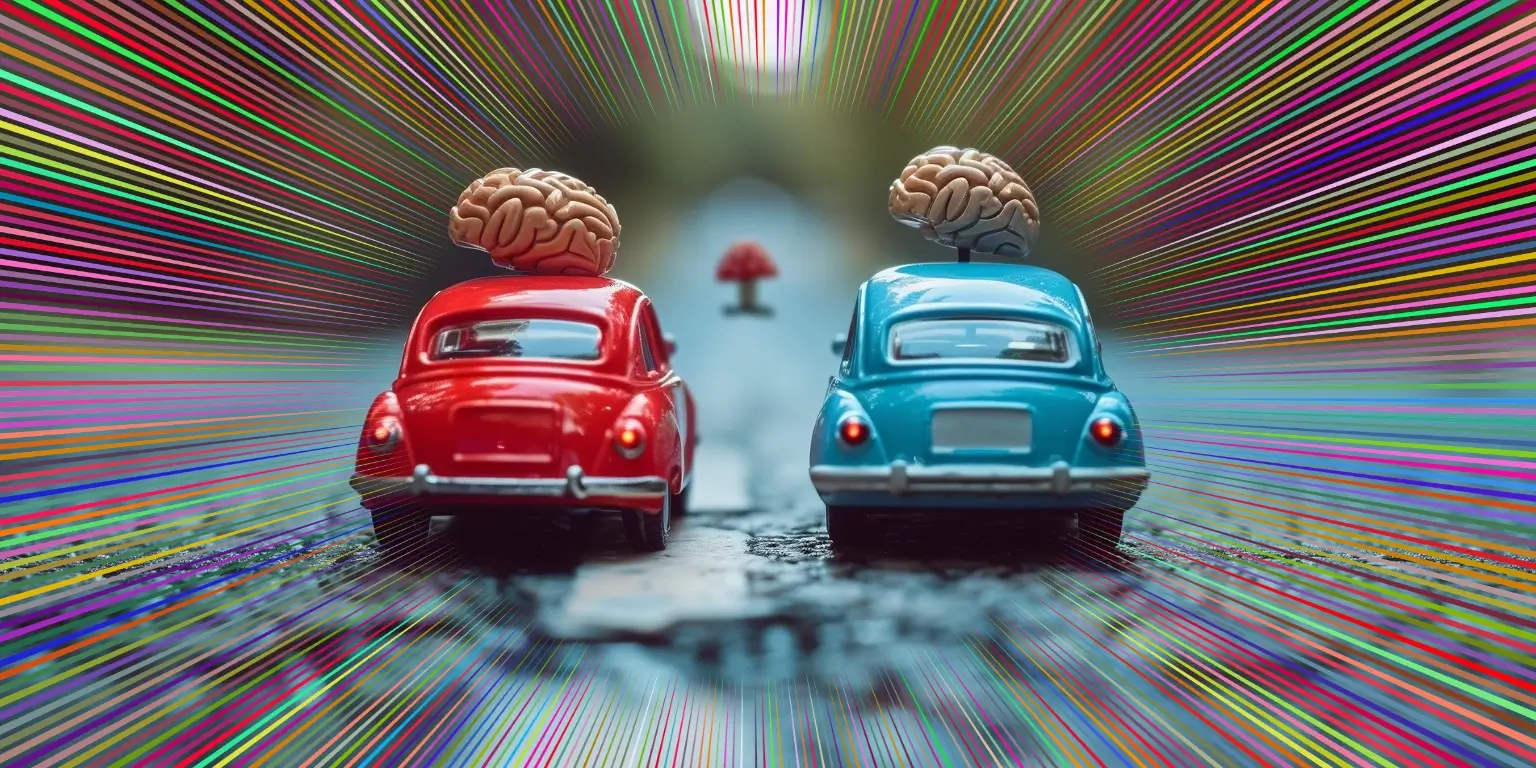
 Jenelle J. Rofe. MS, Neuropsychology
Jenelle J. Rofe. MS, Neuropsychology

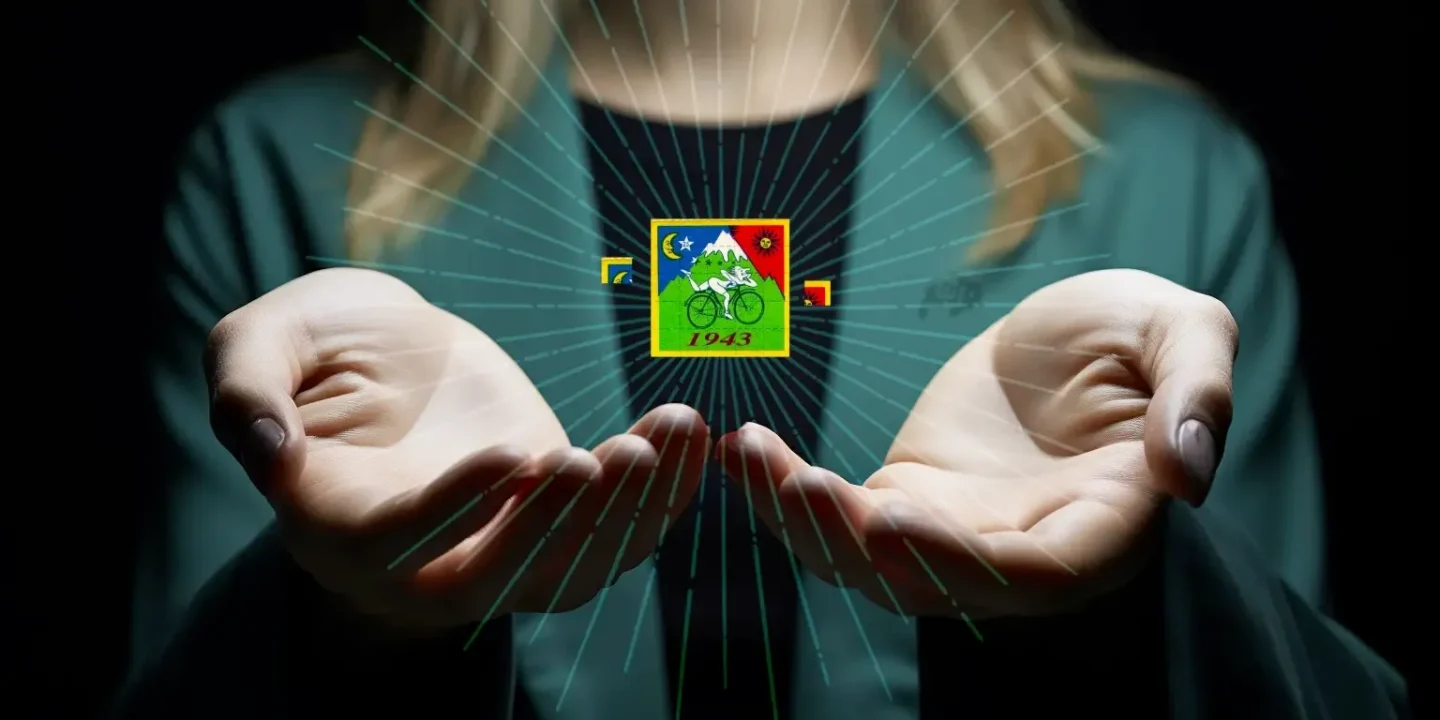
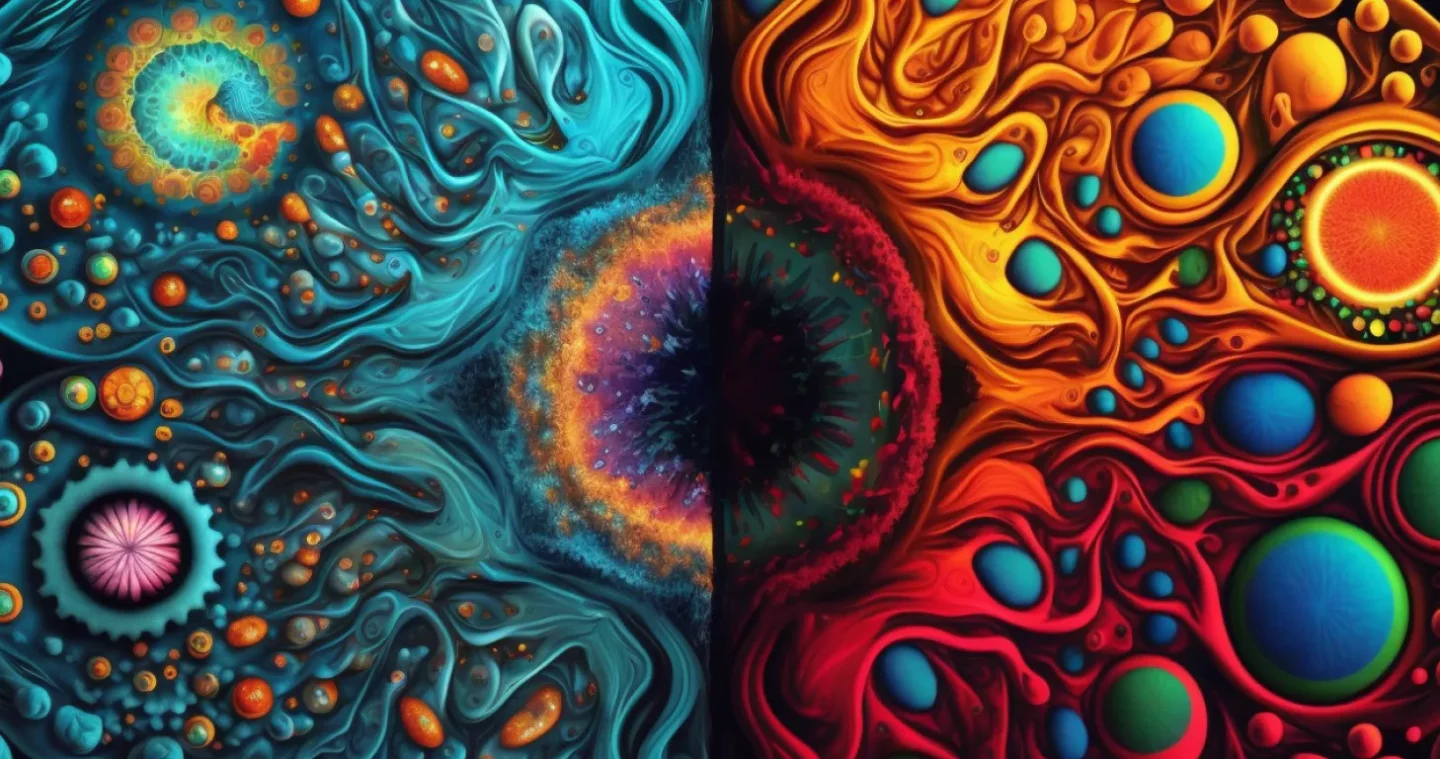

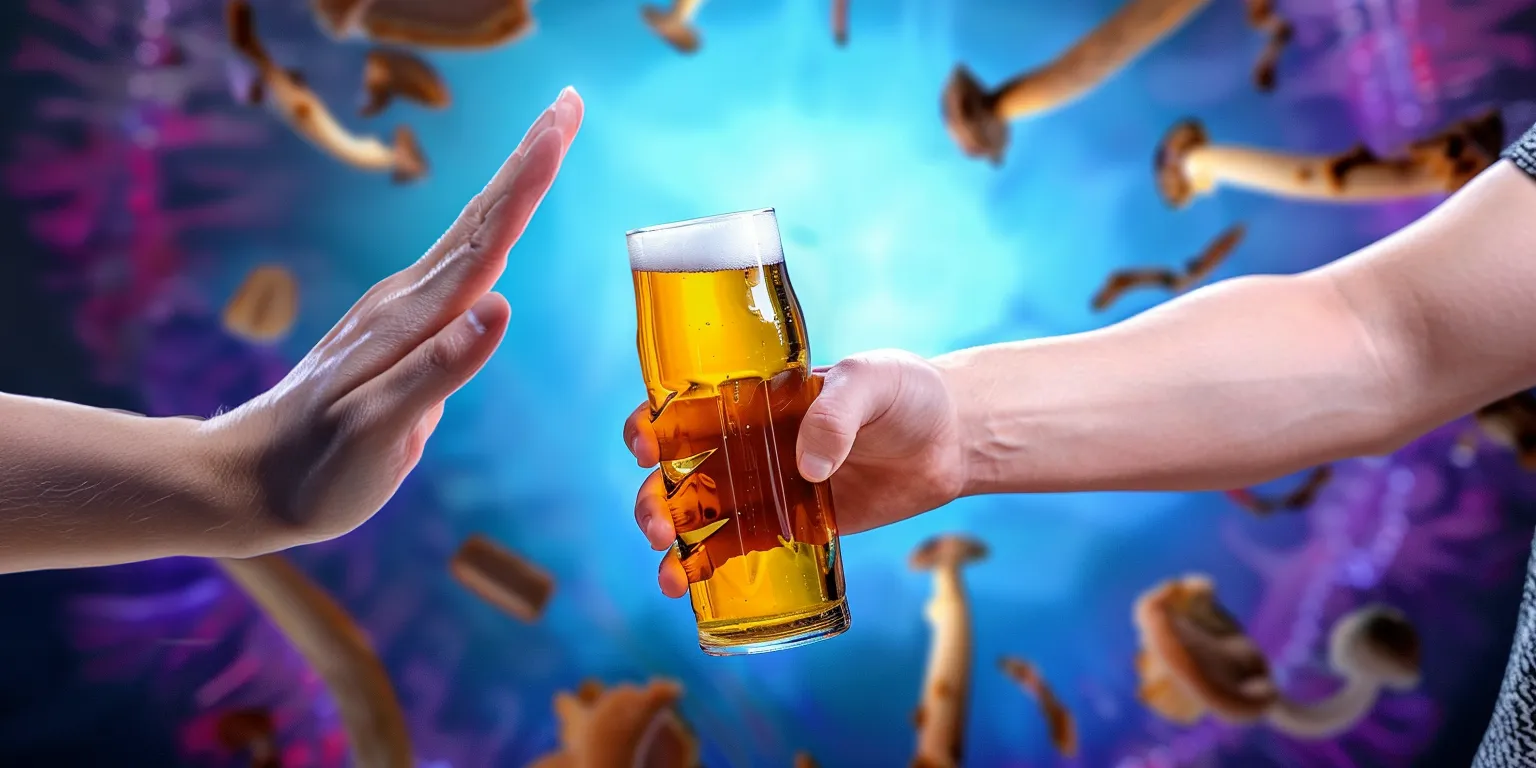
 David Connell
David Connell
